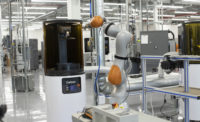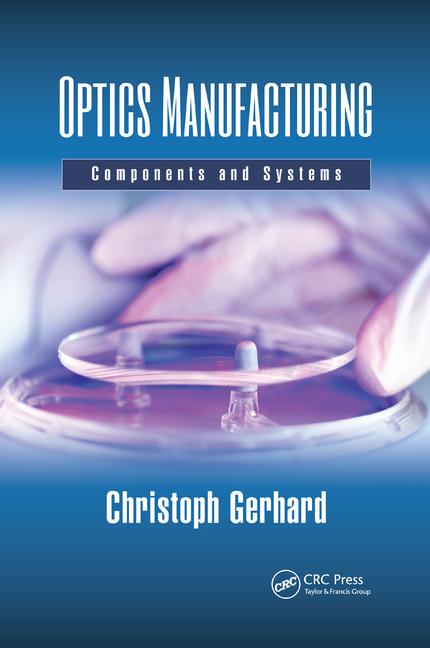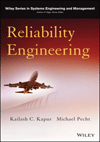ONE OF THE MOST Difficult challenges manufacturing engineers face is convincing management to slow down an assembly task after industrial engineers have increased speed in order to meet certain production quotas. Several years ago, I experienced that type of predicament when I served as senior development engineer at a General Motors electronics plant. Complaints of stripped screws, screws not seated, missing screws and screws with heads broken off were increasing in the plant. That was a very disturbing trend, because many assembly areas had just undergone full capability studies and past fastener problems had been reduced to single-digit defect levels.
Component engineers investigated each complaint. In every case, drivers were the culprit. Previous drivers were 1,100 rpm free-running pneumatic devices. However, the industrial engineers had replaced these drivers with 1,800 to 2,600 rpm pneumatic drivers to increase throughput time.
Assembly areas using the high-speed drivers also began experiencing a higher-than-normal absentee rate among operators, who were complaining about sore wrists and other health problems. It was very difficult to tell management that this problem was perpetrated by the industrial engineers who specified the high-speed drivers. Finger-pointing is not politically correct, but the cause of the problem had to be determined.
Time and Cost Analysis
A dollar value had to be assigned to the problem that would be greater than the money saved with the industrial engineers' increased throughput time. We created a complete analysis of the time spent repairing those units that could be repaired, in addition to the cost of scrapping those that could not be repaired. We also examined shipping costs. Because shipping had limited product on hand, increased charges for charter shipping were incurred.In addition to the cost analysis, we investigated similar problems encountered by other manufacturing companies. We tapped into the expertise of our fastener and driver vendors. But, this strategy produced mixed results. For instance, our materials supplier told us that the wrong fastener was being used; it recommended using a thread cutter. However, our fastener vendor claimed that the materials manufacturer did not know what it was talking about and that too fast a driver speed was being used. The driver manufacturer agreed that the driver speed was probably a contributor, but it did not want to get in the middle of this debate, claiming that the driver speed was our call. Determining who and what to believe required a tremendous amount of work.
Meanwhile, a remote GM plant that had switched to the high-speed pneumatic driver was comparing its problems with a 700-rpm electric driver provided by the fastener vendor. Engineers were told that this new, faster machine would solve their problem. The plant switched to the 700-rpm electric driver and experienced an overall increase in its output--due to the fewer number of repairs and scrap. Fastener-related defects, measured in parts per million, returned to single-digit levels. This was the first meaningful input we received that could be correlated to a dollar value. The information was shared with management immediately. How-ever, more data was needed, because management was convinced that it was just an isolated case at a remote site.
Fortunately, our search for previously published information pertaining to driver speed was beginning to show some results. These articles, which focused on topics such as mechanical fastening in plastics and trilobular fastener driving speeds, were compiled into a summary report and presented to management, along with the study conducted at the remote site. A common theme expressed throughout these articles was that industry demands higher speed drivers, but the time they save is only split seconds. Higher speed drivers generate greater inertia, wrist injuries and other operator health problems, lost accuracy and higher friction.
Friction appeared to be the key word, so we tapped into an ancient rule known to experienced fastener specialists. This rule states that approximately 50 percent of the applied torque is lost in the nut and under head friction, while an additional 40 percent is lost in the thread friction. This fact was presented to management with the help of a pie chart and illustration.
Parallel Studies
As part of a parallel study, more than 500 8-16 by 1/2 hex washer head Plastite 45 screws were installed into a test card of ABS plastic at different speeds. The test card had holes cored to manufacturing recommendations with a 1 degree included draft angle. The driver was computer-controlled for torque and degrees of rotation. It was mounted on an ergonomic arm to ensure correct drive angle. The data was statistically normalized, analyzed and developed into a chart.We discovered that 500 rpm was the best speed for this application. However, our research did not show the increased embedment due to the slam effect of the higher speeds.
An additional research effort was conducted by engineers using other materials, such as aluminum. This study compared a 375-rpm driver with a 975-rpm driver, using both lubricated and nonlubricated M8-1.2 by 40 MM hex flange head screws or bolts. Researchers discovered that the lower speed lubricated bolt gave less scatter than either the high-speed nonlubricated or lubricated bolts. The higher speed driver also produced nearly two times the amount of residue by weight than did the lubricated bolt.
Following the presenta-tion of these studies, which required almost 2 years of work, management issued a memo. It stated: "Any in-crease in driver speeds main-ly to increase throughput times must be justified with a full risk and cost impact analysis study."
Our studies indicated that high speeds can cause many problems. For example, higher driver speed generates ex-cessive heat, work-hardens the surface, melts plastics, reduces control and increases the risk of operator fatigue. When driver speed is kept as low as possible--300 to 600 rpm--there usually is less torque scatter, fewer operator problems, less scrap, less rework, and improved joint quality and reliability.







